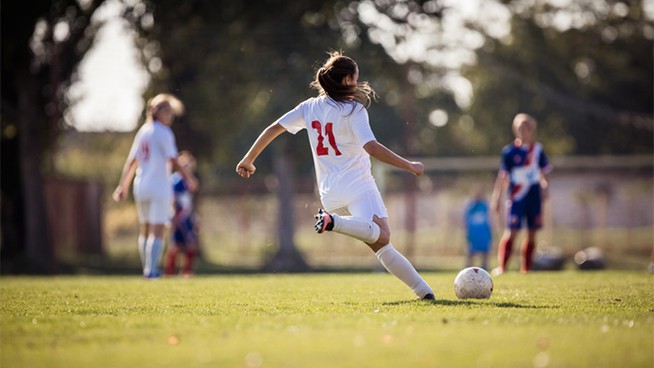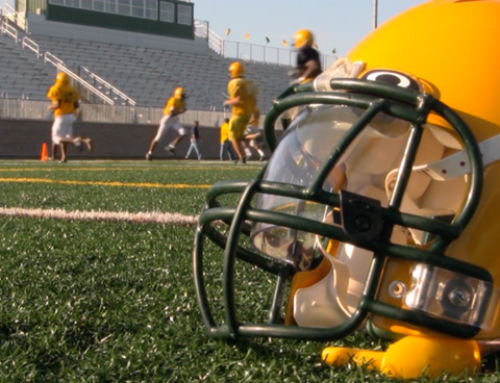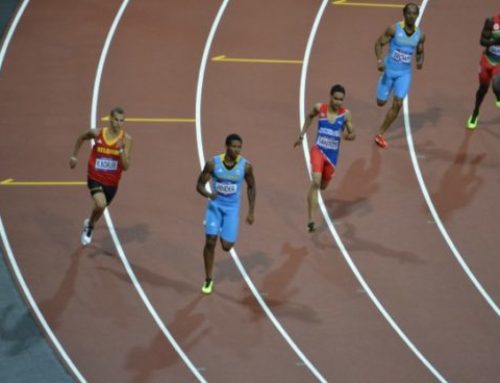How to Use Speed Ladders the Correct Way
![]()
Lots of young athletes are familiar with ladder drills, but many aren’t using them to their full advantage. The point of ladder drills should be to challenge the body to adapt to new muscle patterns and improve balance and agility in game-time scenarios. The point is not to work within your comfort zone, repeating the same drill you’ve done 1,000 times.
RELATED: Speed Ladder Drills
Ladder drills, done correctly, help young athletes get used to coordinated movement patterns and develop important neural connections between their brains and their growing limbs and muscles. With this age group, use traditional ladder drills, ranging from 2 Steps to Icky Shuffles, to set the stage for higher level stepping and foot placement drills.
RELATED: Why the Speed Ladder Alone Won’t Get You Faster
Stepping drills challenge the body to adapt to new muscle patterns and improve proprioceptive ability, to facilitate better footing during games.
For stepping drills to be effective, coaches must challenge athletes with drills they aren’t familiar with, patterns that sometimes feel awkward and drills that require them to slow down and think about what they are doing.
RELATED: In Defense of the Speed Ladder
When challenging an athlete’s proprioceptive ability, I like to use continuous stepping drills (Right-Left-Right-Left, etc.) with specific foot placement. Try the following stepping patterns to force athletes outside of their comfort zones and help them adapt to diverse footing conditions.
- Crossover 4 Step
- 4 Step-3 Step
- 4-3-2
Mechanics
Stepping drills can also be used to teach running mechanics by simulating components of the leg cycle during pure acceleration. I use ladders specifically to teach optimal recovery and knee drive and triple extension of the stance leg and to correct frontside mechanics. Both of the following drills emphasize these three components and focus on speed off the ground on impact:
- 4 Step-2 Step (knee drive)
- 2 Step (knee drive)
Reaction
One complaint many fitness pros have with ladders is that they lack the open-ended reaction factor. So add a reaction component. Once your athletes have mastered their basic patterns, challenge them with external cues from a coach, a ball or another athlete that force them to take in spatial perception data while performing a coordinated task and react to it with the appropriate response. Consider the following drills to add a reaction component to your ladder drills.
- Partner Shadowing
- Cone Out-Ins
Muscle Stiffness Drills
To rapidly accelerate or produce power, you need muscle stiffness to provide a firm lever to push from. Think of this as loaded tension within the muscles, like the tight suspension of a sports car. Many untrained athletes lower their heel on ground impact and compress too much before propelling forward, leading to wasted energy and too much time on the ground. The longer your foot stays in contact with the ground, the less force you produce over time. Instead, you want to fire off the ground like you are stepping on hot coals and follow with more consecutive but equally powerful footstrikes.
- Single-Leg Depth Drop Ladder Hops (for speed)
- Single-Leg Ladder Speed Stick
Overspeed
When teaching power production, you must break it down into the components of force production and speed. Most know that adding resistance to the muscles results in increased force output, but getting the muscles to fire faster is a bit more daunting. If I asked you to run faster than you can, you would probably look at me like I’m crazy, then proceed to run at a fast speed currently within your comfort zone. Right now, your muscles are accustomed to firing at a certain rate against normal gravity. To enable these muscles to fire faster, you must trick them to go outside their comfort zone and get your feet on the ground faster.
Sprint in Overspeed
Many forget the obvious use of ladders as a basic but powerful tool for general fitness. If you want to improve cardio or burn fat, perform intervals with appropriate work/rest ratios. You will notice your heart rate skyrocketing as beads of sweat confirm your efforts. In addition, you can use ladders for upper-body strength circuits for a more functional variation to your typical bench and machine lifts.
- Push-Up Pyramid
- Push-Up Progression
- Walking Renegade Rows
RECOMMENDED FOR YOU
MOST POPULAR
How to Use Speed Ladders the Correct Way
![]()
Lots of young athletes are familiar with ladder drills, but many aren’t using them to their full advantage. The point of ladder drills should be to challenge the body to adapt to new muscle patterns and improve balance and agility in game-time scenarios. The point is not to work within your comfort zone, repeating the same drill you’ve done 1,000 times.
RELATED: Speed Ladder Drills
Ladder drills, done correctly, help young athletes get used to coordinated movement patterns and develop important neural connections between their brains and their growing limbs and muscles. With this age group, use traditional ladder drills, ranging from 2 Steps to Icky Shuffles, to set the stage for higher level stepping and foot placement drills.
RELATED: Why the Speed Ladder Alone Won’t Get You Faster
Stepping drills challenge the body to adapt to new muscle patterns and improve proprioceptive ability, to facilitate better footing during games.
For stepping drills to be effective, coaches must challenge athletes with drills they aren’t familiar with, patterns that sometimes feel awkward and drills that require them to slow down and think about what they are doing.
RELATED: In Defense of the Speed Ladder
When challenging an athlete’s proprioceptive ability, I like to use continuous stepping drills (Right-Left-Right-Left, etc.) with specific foot placement. Try the following stepping patterns to force athletes outside of their comfort zones and help them adapt to diverse footing conditions.
- Crossover 4 Step
- 4 Step-3 Step
- 4-3-2
Mechanics
Stepping drills can also be used to teach running mechanics by simulating components of the leg cycle during pure acceleration. I use ladders specifically to teach optimal recovery and knee drive and triple extension of the stance leg and to correct frontside mechanics. Both of the following drills emphasize these three components and focus on speed off the ground on impact:
- 4 Step-2 Step (knee drive)
- 2 Step (knee drive)
Reaction
One complaint many fitness pros have with ladders is that they lack the open-ended reaction factor. So add a reaction component. Once your athletes have mastered their basic patterns, challenge them with external cues from a coach, a ball or another athlete that force them to take in spatial perception data while performing a coordinated task and react to it with the appropriate response. Consider the following drills to add a reaction component to your ladder drills.
- Partner Shadowing
- Cone Out-Ins
Muscle Stiffness Drills
To rapidly accelerate or produce power, you need muscle stiffness to provide a firm lever to push from. Think of this as loaded tension within the muscles, like the tight suspension of a sports car. Many untrained athletes lower their heel on ground impact and compress too much before propelling forward, leading to wasted energy and too much time on the ground. The longer your foot stays in contact with the ground, the less force you produce over time. Instead, you want to fire off the ground like you are stepping on hot coals and follow with more consecutive but equally powerful footstrikes.
- Single-Leg Depth Drop Ladder Hops (for speed)
- Single-Leg Ladder Speed Stick
Overspeed
When teaching power production, you must break it down into the components of force production and speed. Most know that adding resistance to the muscles results in increased force output, but getting the muscles to fire faster is a bit more daunting. If I asked you to run faster than you can, you would probably look at me like I’m crazy, then proceed to run at a fast speed currently within your comfort zone. Right now, your muscles are accustomed to firing at a certain rate against normal gravity. To enable these muscles to fire faster, you must trick them to go outside their comfort zone and get your feet on the ground faster.
Sprint in Overspeed
Many forget the obvious use of ladders as a basic but powerful tool for general fitness. If you want to improve cardio or burn fat, perform intervals with appropriate work/rest ratios. You will notice your heart rate skyrocketing as beads of sweat confirm your efforts. In addition, you can use ladders for upper-body strength circuits for a more functional variation to your typical bench and machine lifts.
- Push-Up Pyramid
- Push-Up Progression
- Walking Renegade Rows










